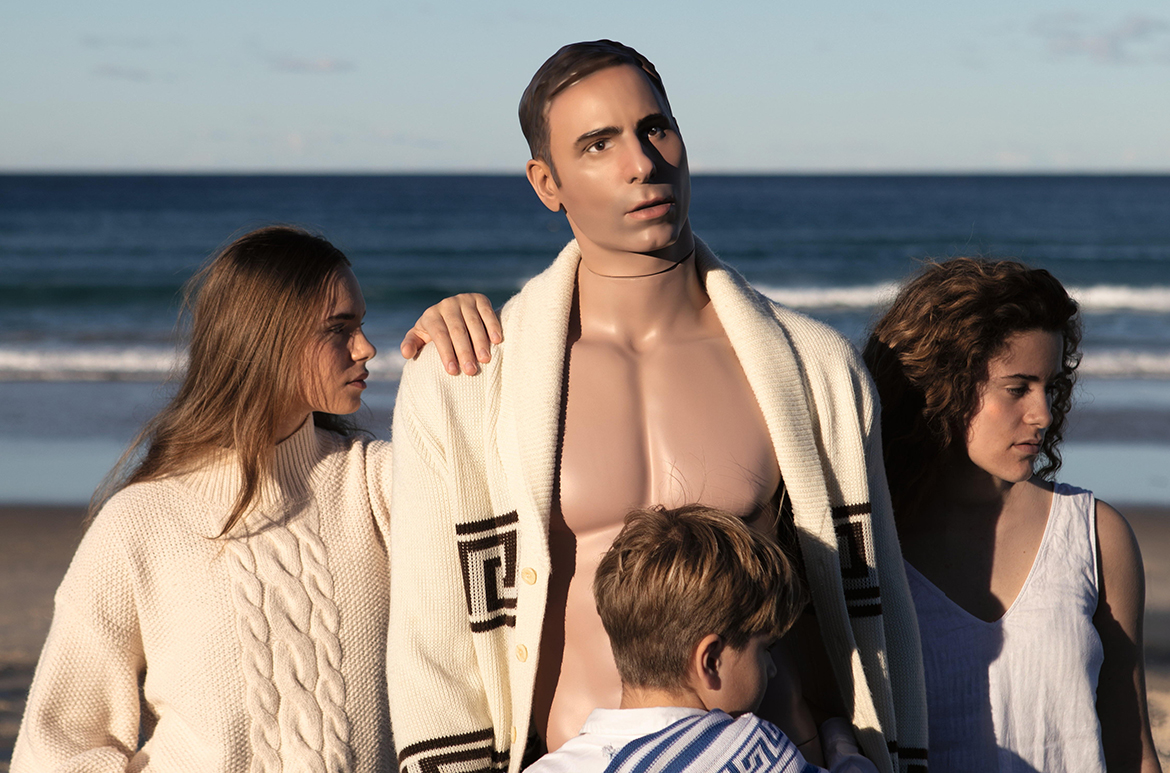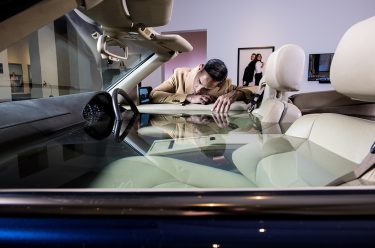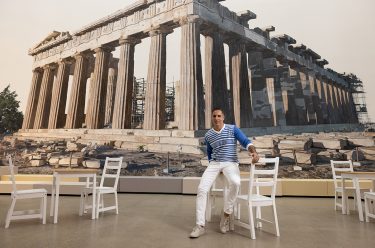Whether realised through the meticulously rendered paintings for which he is best known or through digital photography, video, performance or sculpture, Michael Zavros’s body of work is art-directed and aestheticised to the nth degree. While many are drawn to its largely undisturbed world of luxury, order and beauty, other people are left wondering, even troubled, by its deeper meaning or intent. (In what world are things that perfect?) Replete as Zavros’s works are with objects of desire, the term ‘superficial’ is too easily attached to them. It is as if admiration of his technical virtuosity is a zero-sum game, which
somehow limits entry to the broader ideas he engages with. More than the culmination of their deftly blended brushstrokes, Zavros’s works stylise and reframe rather than imitate reality.
Zavros’s formal training focused on the discipline of printmaking, and was heavily scaffolded by the development of his drawing skills. Zavros was building on a childhood passion and a skill in which he was self-evidently accomplished. This talent gave him the power to imitate reality for its own sake, which, while on one level was captivating, on another risked leading to an imaginative and artistic dead end. As he rapidly made his mark on the art world — mainly through an early focus on hyper-realist paintings based on GQ magazine advertisements for bespoke men’s tailoring, and magnificent if jaded representations of European palace interiors (illustrated Unicorn in the anticamera 2008) — he began to reinvent his luxe subject matter across every genre he embraced, be it still life, portraiture or landscape.
Michael Zavros ‘Unicorn in the anticamera’

Michael Zavros ‘Echo’
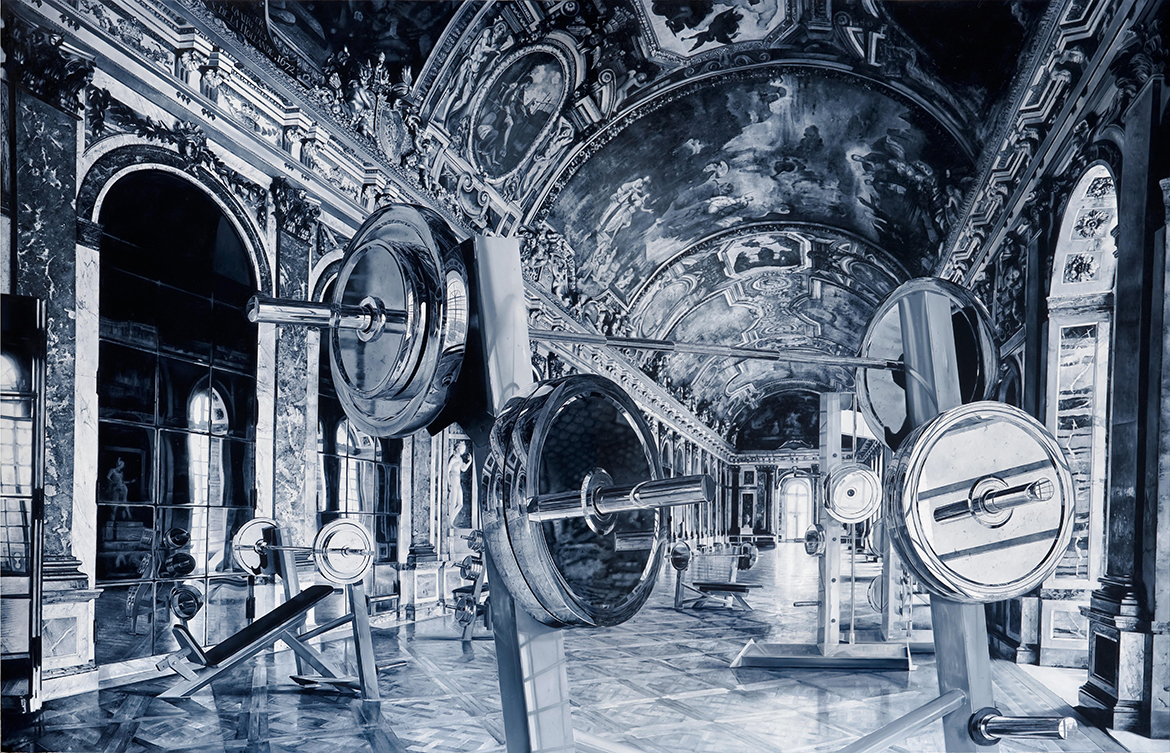
Among the things that differentiate Zavros from many artists of his generation are, perhaps foremost, his unapologetic yet knowing love of beauty. Others are the close attention he has long paid to Western art
history and contemporary design culture — the aura of the ‘designer’ brand — and his devotion to his craft. These hallmarks could and have been attributed not only to his proud European heritage but also his fixation on beauty. Whether through the time vested in its production, the aesthetic affect it creates or the conceptual raison d’être that drives it, Zavros’s work is inescapably about him: his lifestyle — real or imagined — his family, his interests and values, his worldview. Of course, framed in other terms, this could be said of many artists before him (Andy Warhol comes to mind). But as Zavros lives a relatively public life, not least online, his choice of subject matter can’t help but amplify the mystique of how his life intersects with his art.
Michael Zavros ‘White Onagadori’

Michael Zavros ‘The Poodle’
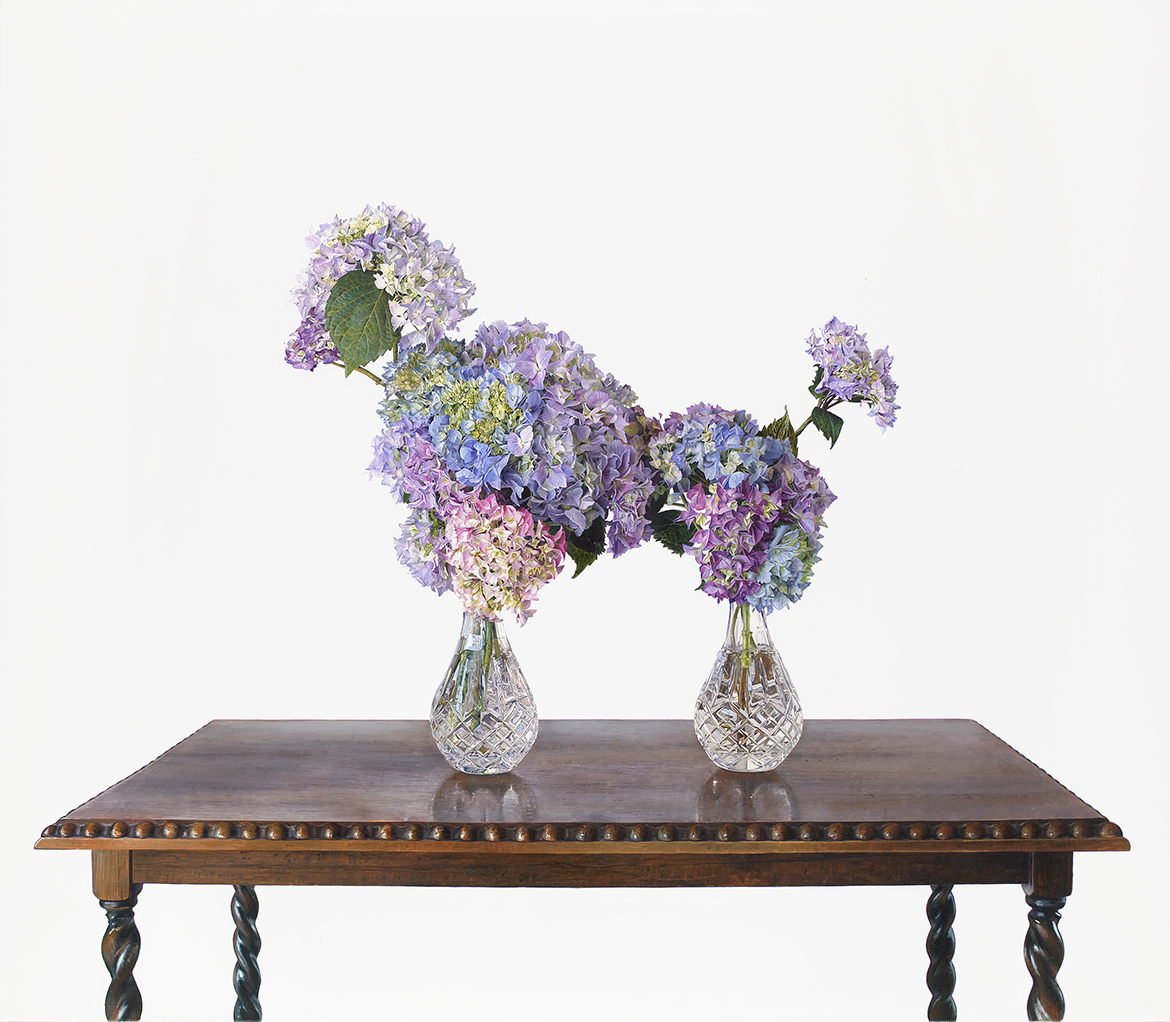
Status symbols abound in them both, expressed in powerful equine portraits, whose pedigree can be traced to British artist George Stubbs’s Whistlejacket 1762 (National Gallery, London), or paintings of the rare Japanese Onagadori breed of chicken, with its impractically long tail (illustrated White Onagadori 2006). Stately palace interiors are rendered in monochrome, sometimes appointed with gym equipment (illustrated Echo 2009), and furniture is draped in exotic animal skins set against coveted works of art — luxury goods as memento mori. Despite the surface detail, there are always layers to Zavros’s works, a series of tongue-incheek still-life paintings depicting painstaking studio arrangements of flowers (illustrated The Poodle 2014) are described by Zavros as ‘the culmination of a performance’ and ‘a baroque folly’, on account of the time it took to arrange and paint these tableaux before the flowers wilted in the Queensland heat. And his ‘Prince/Zavros’ series 2012–13 (illustrated Prince/Zavros 5 2012) includes a re-creation of the iconic Marlboro Man advertisements famously rephotographed by American artist Richard Prince: a nested doll of appropriation that returns the contested image one step further back towards fine art.
Michael Zavros ‘Prince/Zavros 5’
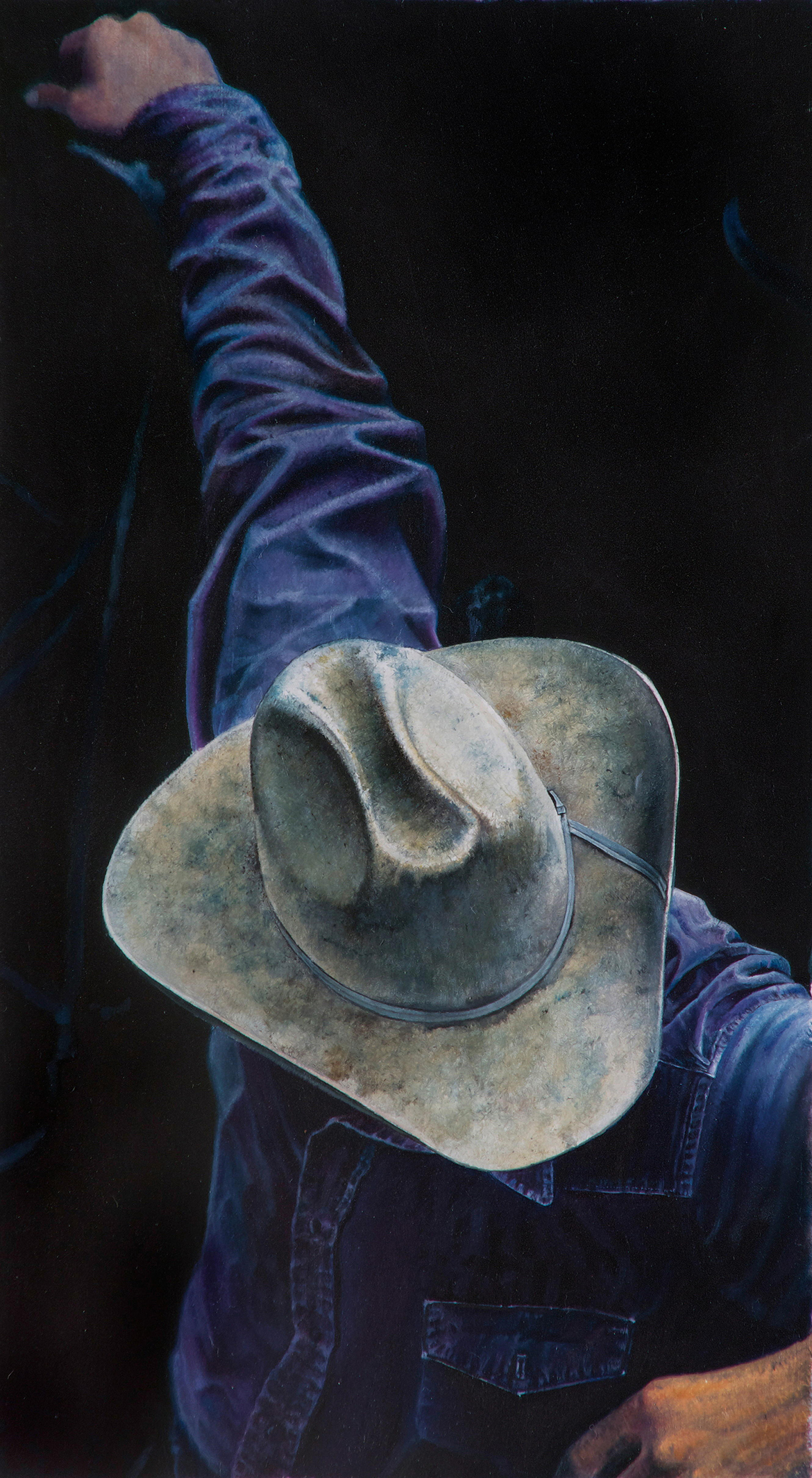
Raised on the Gold Coast hinterland, the son of Greek-Cypriot and Irish schoolteacher parents, Zavros grew up with an aspirational yearning for high-end goods. This first played out on visits with his father to luxury-car dealerships, echoes of which are found in the redoubled self‑portrait V12/Narcissus 2009 (illustrated). This painting is at once an homage to Italian master Caravaggio’s Narcissus 1597–99 (Palazzo Barberini, Rome) and to the artist’s prized black Mercedes-Benz, highly polished and thus endlessly reflective, in which an obsessively circular desire for perfection is unable to ever be resolved.
Michael Zavros ‘V12/Narcissus’
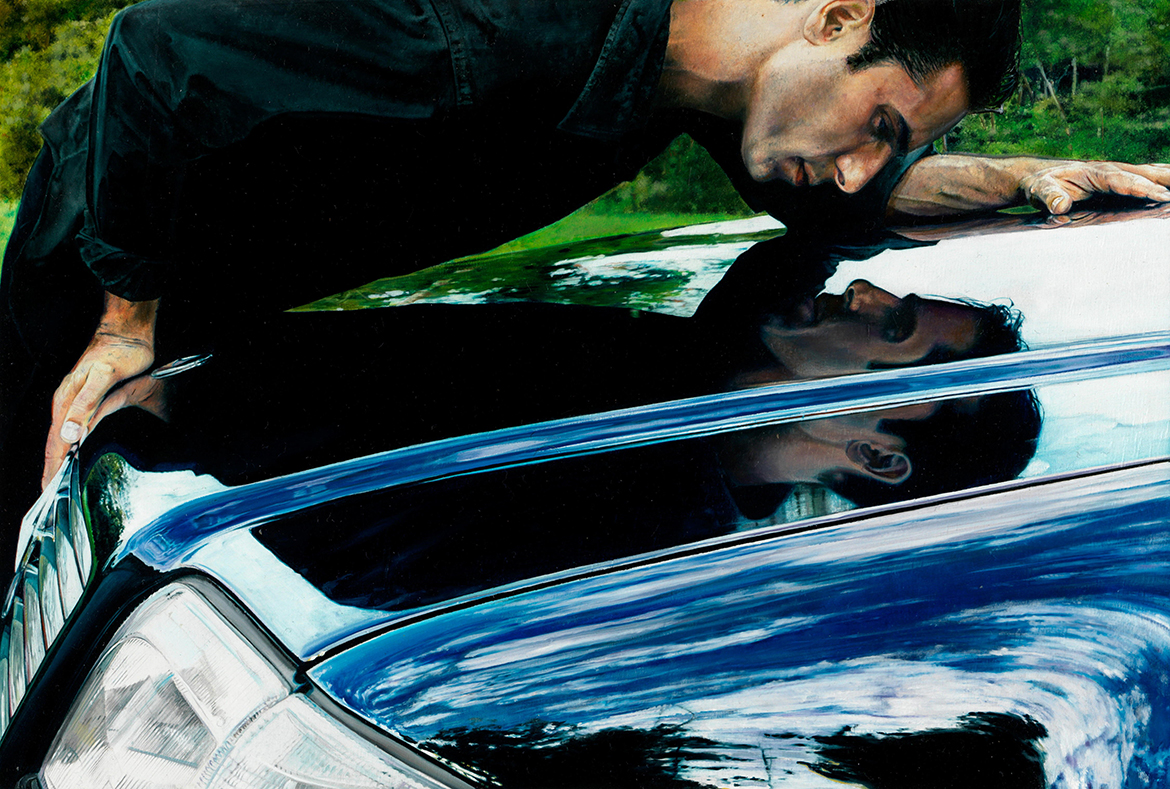
Zavros’s self is also a common subject, whether represented as Narcissus in paintings such as Bad dad 2013, or by one of a number of surrogates that blur the edges of his identity. His self-portraiture also extends to his children, in particular eldest daughter Phoebe — his self‑described ‘me, outside of me’ — and increasingly his son Leo.
In the painting Phoebe is 11/Linda Farrow 2017, Zavros is also seen reflected, photographing his daughter in her designer sunglasses — an inversion of Jan van Eyck’s The Arnolfini portrait 1434 (National Gallery, London) in which the artist famously appears, in the act of painting the marriage portrait, in a mirror in the background. Recent photographic series bring an entirely different lens to depicting a more sculpted and flawless self. Zavros casts model Sean O’Pry (illustrated) as a younger, more perfect double, and, taking substitution to its extreme, inserts Dad — a finely hewn bespoke mannequin — into carefully if oddly staged family snapshots (illustrated Dad likes Mercedes 2020).
Michael Zavros ‘Self-portrait with Sean O’Pry’
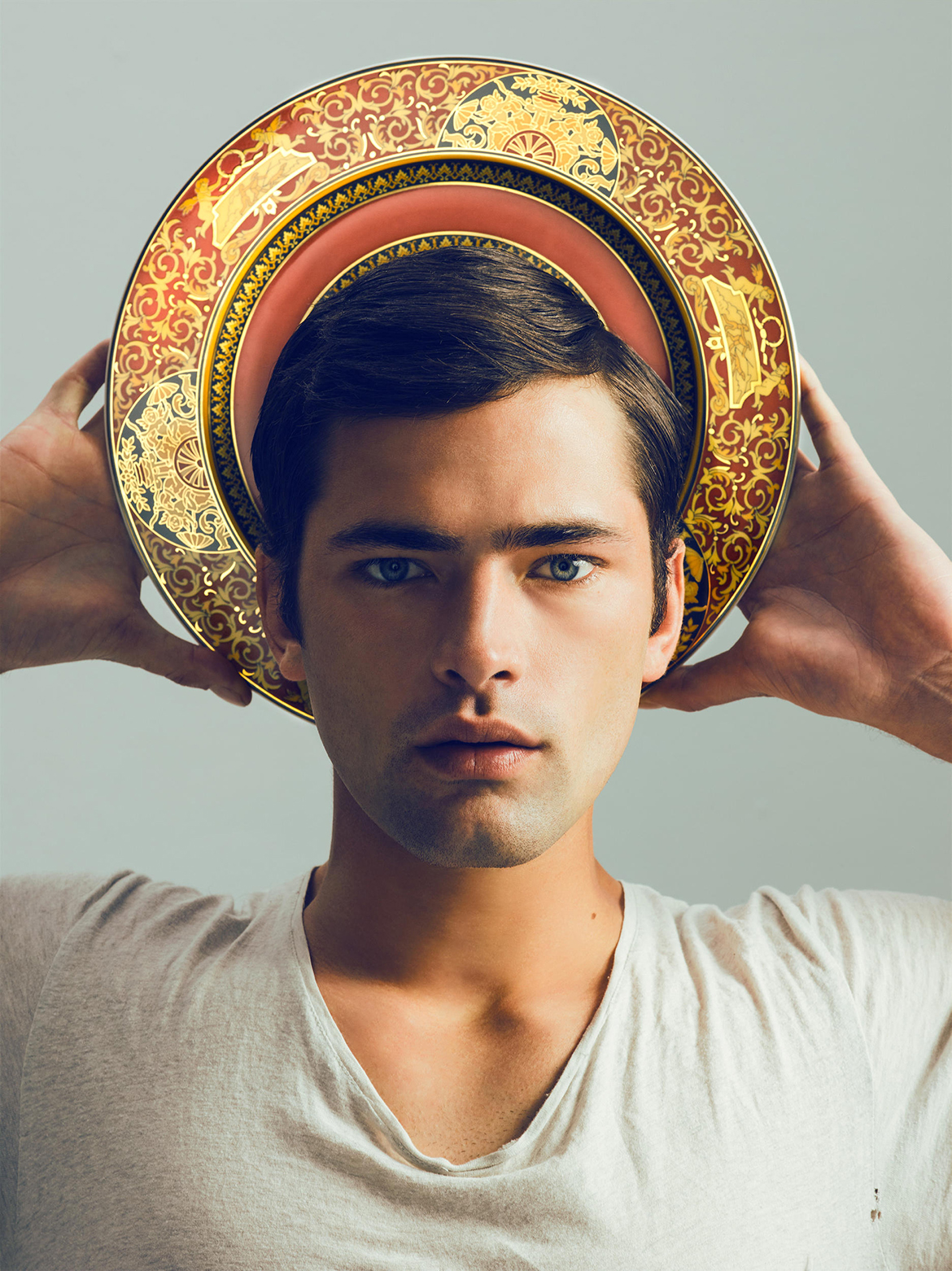
Michael Zavros ‘Dad likes Mercedes’
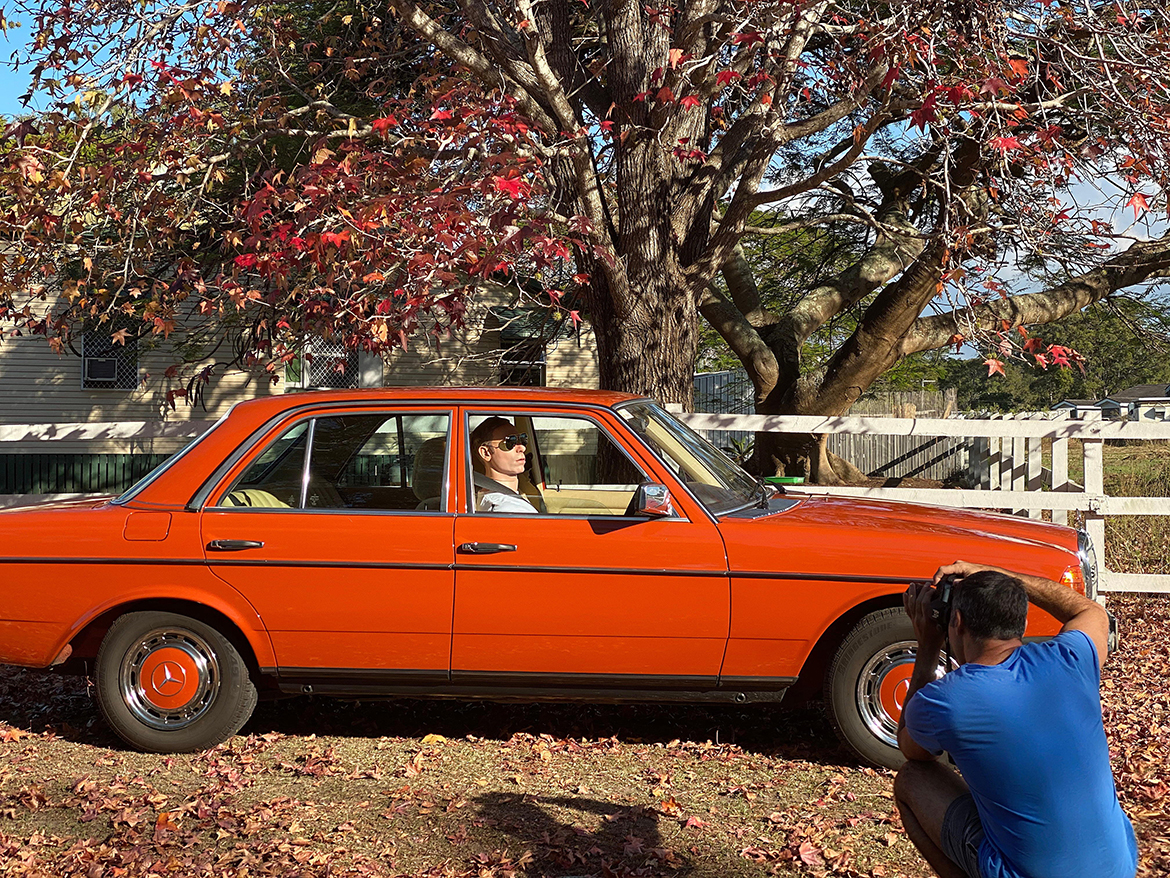
Michael Zavros ‘Dad likes winter’
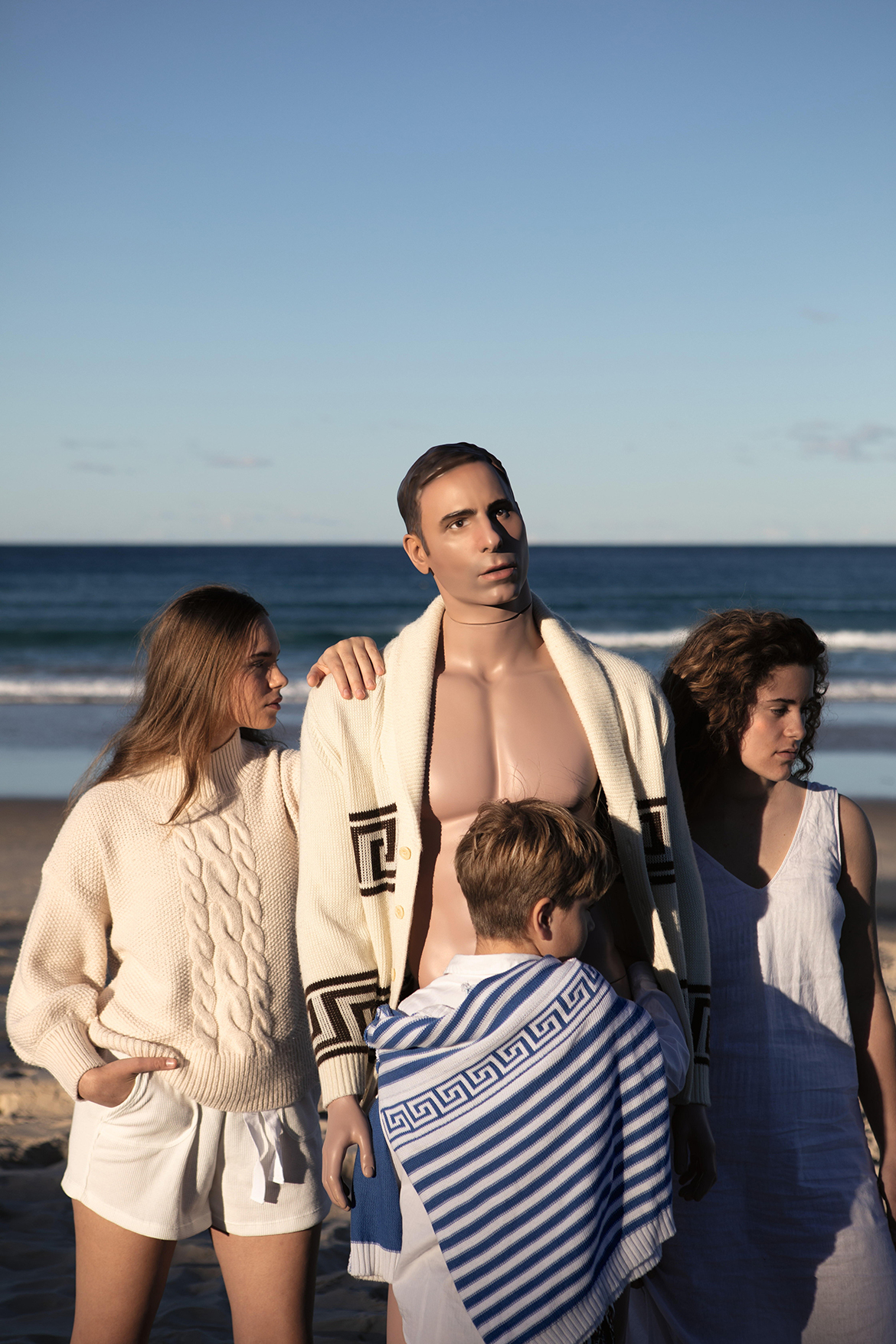
In a new commission, Drowned Mercedes 2023 (illustrated work in progress), Zavros stages a classic open‑top Mercedes-Benz SL-Class in the centre of the gallery, its interior cavity filled with water. Peering into the luxury vehicle, visitors see its immaculately crafted wood‑and‑leather detailing submerged in water and, V12/Narcissus-like, they also see themselves. Zavros is known for creating works whose meaning can be arcane and elusive, even obtuse. In this vein, Drowned Mercedes could be read as a warning about climate change, or as a critique of the irrationality of misspent wealth, or both. In many ways, the idea of the English eighteenth-century folly — an ornamental building designed to conjure up the Classical past (precisely like the subject of Zavros’s own Love’s temple 2006) — seems to fit this work best. A classic car rendered impossible to drive but that still looks, strangely, perfect.
Michael Zavros ‘Drowned Mercedes’ (work in progress)
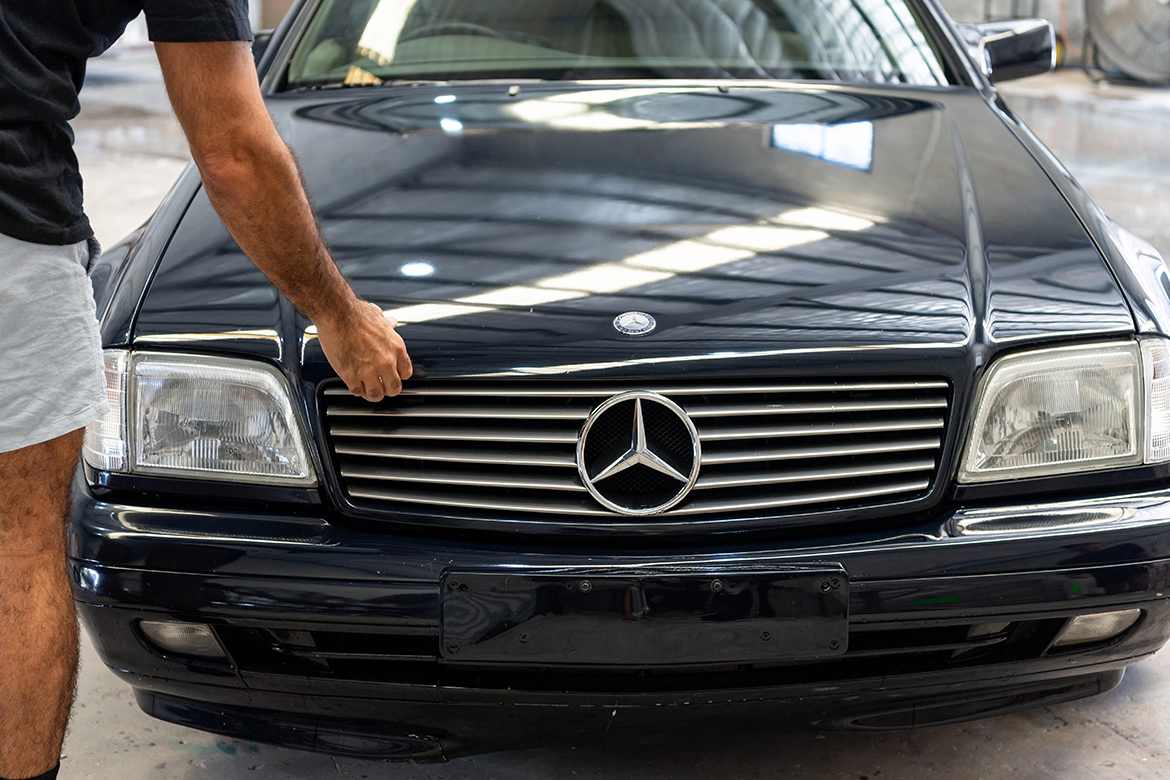
Implicated in the world of putative quality and luxury, fashion and appearance, Zavros’s idealised imagery speaks to the Australia driven by conspicuous consumption, self-improvement and individualism; although to what end is not always clear. Zavros’s subject matter, not to mention his exquisite rendering of it, attracts both praise and opprobrium for its perceived materialism and ostensible superficiality.
Chris Saines, CNZM is Director, QAGOMA
This edited extract was originally published in Michael Zavros: The Favourite, Queensland Art Gallery | Gallery of Modern Art, 2023
‘Michael Zavros: The Favourite‘ in 1.1 (The Fairfax Gallery) and 1.2 was at the Gallery of Modern Art (GOMA) in Brisbane from 24 June to 2 October 2023. This exhibition offered opportunities for dialogue with ‘eX de Medici: Beautiful Wickedness’ presented in the adjacent gallery 1.2 and 1.3 (Eric and Marion Taylor Gallery).
#QAGOMA
